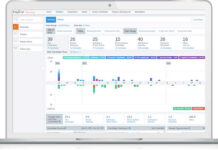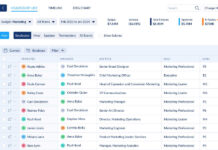
It’s almost a given that contingent workers are going to play a larger role in workforce strategies, and observers seem unanimous in their view that HCM technology vendors will work on developing better ways not only to account for contract workers in their planning, but also to better integrate them into the workforce, track their performance and manage them. Not only that, as demand for the best contingent talent grows, organizations will need to develop new strategies to recruit these workers, then develop and maintain their relationships.
In December, SAP Fieldglass, a cloud-based solution for contingent-worker procurement and management, announced its Flex product, which it called “a first in its class workforce management solution that will reinvent how medium-sized businesses get work done.” In a press release, Fieldglass President Rob Brimm said the product gave mid-sized organizations “a simple, best-in-class solution to help find, engage and manage external workers.”
Flex allows managers throughout an organization to take advantage of compliance, reporting and benchmarking tools, as well as standardized requisition and onboarding processes. These are all undoubtedly welcome things to managers who must often scramble to find contract workers to get a project done on time. SAP Fieldglass’s claim of “accurate billing and invoicing” feature are sure to be welcomed by contractors who often juggle multiple clients with multiple procedures. Even if Fieldglass Flex streamlines things with only one of those clients, every little bit helps.
We haven’t field-tested Flex, but SAP Fieldglass, like SAP SuccessFactors, seems to have a pretty solid fan base. So, we say “good for SAP” in trying to bring a more robust solution to the challenges of managing contingent workers. But Fieldglass Flex and the competitors that will inevitably follow leave untouched a fundamental disconnect between the ideas of workforce planning and contingent workers: HR worries about one and Procurement worries about the other. That’s a problem, one executive observed to us, because Procurement focuses on cost control while Human Resources is about talent management. And talent management, he noted, is becoming an increasingly strategic question.
The Bigger Question That Remains
So our question remains: How do you effectively manage your total workforce when two separate functions are involved, one managing for cost and the other for building the most effective workforce possible? HR has little, if any, involvement in selecting contractors and may find itself limited to an “enforcer” role, making sure legal and regulatory requirements are met, if Procurement hasn’t taken on those responsibilities.
This doesn’t seem like a workable approach in the medium and long terms. As the importance of the contingent workforce grows, its impact on a company’s business performance will depend on how effectively it’s managed as a part of the whole, not as a separate component. Yet conversations with executives at both vendors and their HR customers reveal that not many organizations are giving the issue much thought.
That puts vendors like SAP (with Fieldglass and SuccessFactors), PeopleFluent (which includes a VMS in its HR software suite) and Oracle (with its Supplier Lifecycle Management and HCM products) in a position to lead the development of end-to-end people-management systems that ensure recruitment and management of a true total workforce. The question is how long will it take for their customers to consider the issue pressing enough to be worth an investment in real time, thought and money.
Image Copyright: rawpixel / 123RF Stock Photo















